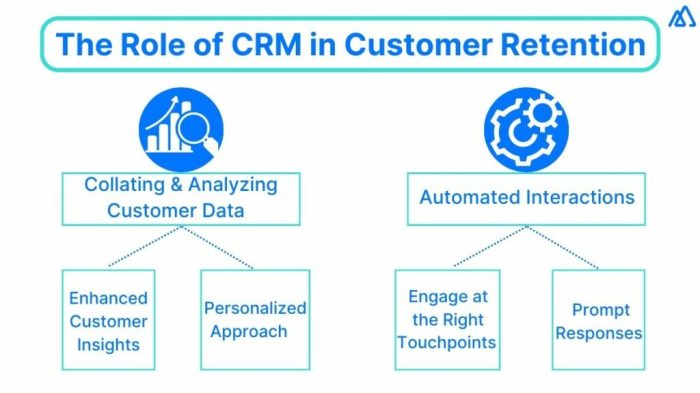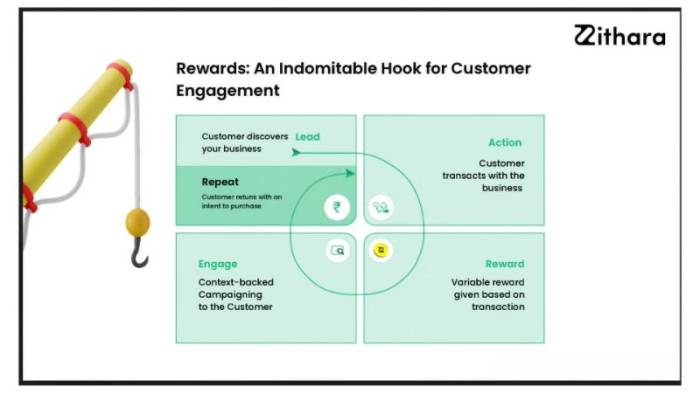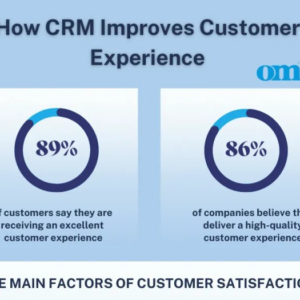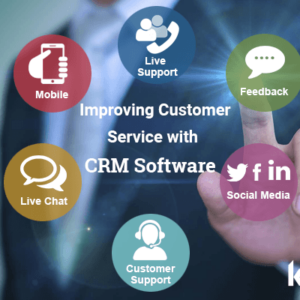Why CRM Software is Essential for Boosting Customer Retention and Loyalty? Let’s be real, in today’s cutthroat business world, keeping customers happy isn’t just a nice-to-have; it’s a survival tactic. And that’s where CRM software steps in, acting as your secret weapon for building stronger, more profitable relationships. Think of it as your personal customer relationship guru, helping you understand their needs, anticipate their wants, and ultimately, keep them coming back for more. This isn’t just about selling; it’s about building a loyal tribe who’ll sing your praises (and keep your cash register ringing).
From understanding the customer lifecycle to leveraging data-driven insights, we’ll dive deep into how CRM software transforms your approach to customer retention. We’ll explore key features, practical strategies, and measurable results, showing you exactly how to turn satisfied customers into brand advocates. Get ready to level up your customer relationship game!
Understanding Customer Relationships and Retention

Source: kylas.io
In today’s fiercely competitive market, cultivating strong customer relationships isn’t just a nice-to-have; it’s a survival necessity. Building loyalty translates directly to increased revenue, reduced acquisition costs, and sustainable business growth. Understanding the nuances of customer interactions and leveraging technology to optimize these interactions is key to unlocking this potential.
Strong customer relationships are the bedrock of business success. Happy customers become repeat customers, advocates for your brand, and a powerful source of organic growth. They are more likely to forgive minor mistakes and less likely to switch to competitors, even when presented with attractive offers. Conversely, neglecting customer relationships can lead to a downward spiral of lost revenue, damaged reputation, and ultimately, business failure.
The Customer Lifecycle Stages and CRM Optimization
The customer lifecycle encompasses several key stages, each presenting opportunities to strengthen relationships and improve retention. Effective CRM software provides the tools to manage and optimize these interactions across the entire journey. From initial contact to post-purchase support, CRM systems offer a centralized platform to track customer interactions, preferences, and behaviors, allowing businesses to personalize their engagement and anticipate customer needs.
Examples of Poor Customer Relationship Management
Imagine a clothing retailer that fails to follow up on a customer’s online order, leaving them in the dark about shipping updates. Or a tech company that provides inadequate technical support, leaving customers frustrated and feeling unsupported. These are prime examples of poor CRM practices. The consequences? Lost sales, negative reviews, and damage to brand reputation, ultimately leading to decreased customer retention. Customers feel undervalued and are more likely to switch to a competitor that prioritizes a better customer experience.
Comparison of Businesses with and Without Effective CRM Strategies
The impact of a well-implemented CRM strategy on customer retention is undeniable. The following table illustrates this:
| Feature | Business with Effective CRM | Business without Effective CRM |
|---|---|---|
| Customer Retention Rate | 70-80% (hypothetical, based on industry benchmarks for companies with strong CRM) | 30-40% (hypothetical, reflecting lower retention in absence of effective CRM) |
| Customer Lifetime Value (CLTV) | High (due to repeat purchases and referrals) | Low (due to high customer churn) |
| Customer Acquisition Cost (CAC) | Lower (due to higher customer loyalty and organic referrals) | Higher (due to continuous need for new customer acquisition) |
| Customer Satisfaction | High (due to personalized interactions and proactive support) | Low (due to impersonal interactions and lack of support) |
Note: These figures are hypothetical examples to illustrate the difference. Actual retention rates vary significantly depending on industry, business model, and other factors. However, the general trend remains consistent: Effective CRM strategies lead to improved customer retention and a stronger bottom line.
Key Features of CRM Software for Boosting Retention

Source: medium.com
Want happier customers and a healthier bottom line? CRM software is your secret weapon. Mastering customer interactions is key, and that’s where a solid CRM strategy comes in. Check out these crucial steps for success by reading 5 CRM Best Practices Every Business Should Adopt in 2025 to truly understand how to leverage its power.
Ultimately, a well-implemented CRM system translates directly into increased customer retention and unwavering loyalty – a win-win for any business.
Let’s face it, in today’s hyper-competitive market, keeping customers happy and coming back for more isn’t just a nice-to-have; it’s a survival tactic. And that’s where CRM software steps in, acting as your secret weapon for building lasting customer relationships and boosting those all-important retention rates. It’s not just about storing contact details; it’s about leveraging data to understand your customers deeply and tailor your interactions for maximum impact.
Effective CRM software goes beyond basic contact management; it empowers businesses to proactively engage with customers, anticipate their needs, and resolve issues swiftly. This proactive approach is key to building loyalty and fostering long-term relationships. The right CRM can transform your customer interactions from reactive fire-fighting to strategic relationship-building.
Contact Management and Sales Automation
A robust CRM system provides a centralized repository for all customer information – from contact details and purchase history to communication logs and interaction notes. This centralized view gives your team a 360-degree perspective of each customer, eliminating information silos and ensuring everyone is on the same page. Sales automation features streamline the sales process, automating tasks like lead qualification, follow-up emails, and opportunity tracking, freeing up your sales team to focus on building relationships rather than administrative busywork. Imagine the efficiency gains: quicker responses, more personalized interactions, and ultimately, happier customers.
Marketing Automation and Personalized Communication
CRM systems often integrate powerful marketing automation tools. This allows for highly targeted campaigns based on customer segmentation. For example, you could segment customers based on purchase history, demographics, or engagement levels. This enables you to send highly relevant and personalized messages, increasing the likelihood of engagement and conversion. Think of it as sending the right message to the right person at the right time – a far cry from generic blasts that often end up in the trash. This personalized approach fosters a sense of connection and value, strengthening customer loyalty.
Customer Service Tools and Proactive Issue Resolution
Effective CRM systems include features designed to streamline customer service and enhance issue resolution. Tools like integrated ticketing systems, knowledge bases, and live chat functionalities enable quick and efficient responses to customer queries. But it goes beyond just reacting to problems; a good CRM allows you to proactively identify potential issues based on customer data. For instance, if a customer’s order is delayed, the CRM can trigger an automated notification, keeping them informed and mitigating potential frustration. This proactive approach showcases your commitment to customer satisfaction and builds trust.
Workflow of a Customer Interaction Using CRM Features
The following illustrates a typical customer interaction workflow enhanced by CRM features:
Flowchart:
(Imagine a flowchart here. The flowchart would begin with a “New Customer Inquiry” box, leading to a “CRM automatically records inquiry details” box. This would branch to “Agent accesses customer history in CRM,” then to “Agent resolves issue/answers query using CRM-integrated knowledge base.” The next step would be “CRM updates customer interaction history,” followed by “CRM triggers automated follow-up email/survey.” Finally, the flowchart would conclude with a “Customer satisfaction assessed” box.)
This simplified flowchart demonstrates how CRM streamlines interactions, ensures consistent service, and facilitates proactive follow-up, all crucial for boosting customer retention.
Leveraging Data for Improved Customer Loyalty
Unlocking the true power of CRM software goes beyond just organizing contacts; it’s about harnessing the wealth of data it collects to build stronger, more loyal customer relationships. Think of it as having a superpower: the ability to truly *understand* your customers and tailor your interactions to their individual needs. This data-driven approach isn’t just about improving retention; it’s about fostering genuine loyalty that translates into repeat business and positive word-of-mouth marketing.
CRM software acts as a central hub, gathering crucial information about your customers. This isn’t just names and addresses; we’re talking about purchase history, website activity, customer service interactions, and even social media engagement. By analyzing this data, businesses gain unparalleled insights into customer behavior, preferences, and pain points. This understanding allows for a level of personalization previously unimaginable, creating a truly unique and valuable customer experience.
Key Customer Data Points and Their Impact on Retention, Why CRM Software is Essential for Boosting Customer Retention and Loyalty
CRM systems collect a treasure trove of data, each piece contributing to a richer understanding of your customer base. This data isn’t just numbers; it’s the story of your customer’s journey with your brand. For example, purchase history reveals buying patterns and preferences, while website activity highlights areas of interest and potential friction points. Customer service interactions offer valuable feedback, identifying areas for improvement and opportunities for personalized support. Social media engagement reveals brand sentiment and provides insights into what resonates with your audience. By analyzing this combined data, businesses can craft targeted retention strategies, anticipating customer needs and proactively addressing potential issues.
Understanding Customer Behavior and Preferences Through Data Analysis
Analyzing CRM data allows businesses to move beyond simple demographics and delve into the nuanced behaviors and preferences of their customers. For example, a coffee shop using CRM might notice that customers who purchase a loyalty card also tend to buy pastries more frequently. This insight allows them to tailor promotions, offering discounts on pastries to loyalty card holders. Similarly, an e-commerce business might discover that customers who abandon their online shopping carts often do so because of high shipping costs. This knowledge allows them to adjust their shipping policies or offer free shipping promotions to incentivize completion of purchases. The key is to identify patterns and correlations within the data to gain a deeper understanding of customer behavior.
Personalizing Customer Interactions to Enhance Loyalty
Armed with the insights gleaned from CRM data analysis, businesses can personalize customer interactions in meaningful ways. This goes far beyond simply using a customer’s name in an email. Personalized interactions can include targeted offers based on past purchases, proactive customer service based on identified pain points, or customized content based on website browsing history. For example, a clothing retailer might send an email to a customer who recently viewed a particular dress, offering a discount or suggesting similar styles. A travel agency might proactively contact a customer whose trip is approaching, offering helpful travel tips or addressing any potential concerns. These personalized touches create a sense of value and appreciation, fostering stronger customer loyalty.
Actionable Insights from CRM Data for Improved Customer Loyalty
- Identify at-risk customers: Analyze purchase frequency and recency to identify customers who haven’t engaged with your brand recently and proactively reach out with personalized offers or support.
- Segment customers based on behavior: Group customers with similar behaviors and preferences to tailor marketing messages and offers for maximum impact.
- Personalize communication: Use customer data to create personalized email campaigns, website experiences, and customer service interactions.
- Proactive customer service: Anticipate customer needs and address potential issues before they escalate, based on past interactions and behavior.
- Measure the effectiveness of retention strategies: Track key metrics such as customer lifetime value (CLTV) and churn rate to assess the success of your CRM-driven retention efforts and make data-backed adjustments.
Improving Customer Service Through CRM: Why CRM Software Is Essential For Boosting Customer Retention And Loyalty
Let’s face it: in today’s hyper-connected world, stellar customer service isn’t just a nice-to-have—it’s a survival skill. And CRM software is the secret weapon businesses need to conquer the customer service battlefield. It’s the key to transforming frustrating experiences into loyal relationships, turning complaints into opportunities, and ultimately boosting your bottom line.
CRM systems dramatically streamline customer service processes, leading to significantly faster response times and happier customers. Imagine a world where every customer interaction is tracked, analyzed, and readily available to every member of your team. That’s the power of a well-implemented CRM. This centralized information hub allows for quick access to customer history, purchase details, past interactions, and even preferred communication methods – all crucial for providing personalized and efficient support.
Streamlining Customer Service Processes
Efficient customer service hinges on speed and accuracy. CRM software provides a centralized repository for all customer information, eliminating the frustrating search for details across disparate systems. This allows agents to quickly access relevant information, understand the customer’s context, and respond promptly. Features like automated workflows and ticketing systems further enhance efficiency, ensuring that queries are routed to the right person at the right time, reducing resolution times and minimizing customer wait times. For example, a CRM could automatically assign a high-priority tag to a complaint about a faulty product, ensuring it gets immediate attention from a specialist.
Facilitating Multi-Channel Communication
Modern customers interact with businesses across multiple channels – email, phone, social media, live chat – and expect seamless communication across all of them. CRM systems integrate these channels, providing a unified view of each customer’s interactions. This means that whether a customer contacts you via Twitter or phone, your agents have access to their complete history, ensuring a consistent and personalized experience. No more frustrating “I’ve already told someone else this!” moments. The CRM provides a single source of truth, enhancing communication efficiency and customer satisfaction.
Best Practices for Effective Issue Resolution and Loyalty Building
Effective use of CRM for customer service requires more than just implementation; it demands a strategic approach. First, ensure your CRM is properly configured to track key metrics like response times, resolution rates, and customer satisfaction scores. Regularly analyze this data to identify areas for improvement. Second, empower your agents with the knowledge and tools they need to resolve issues effectively. Provide comprehensive training on using the CRM system and equip them with access to relevant resources like knowledge bases and FAQs. Finally, personalize the customer experience. Use the information stored in the CRM to tailor your responses to individual customer needs and preferences. A simple “I see you’ve contacted us before regarding…” can go a long way in building rapport and trust.
Scenario: Resolving a Customer Complaint
Imagine Sarah, a loyal customer of “Cozy Candles,” contacts customer service about a flickering candle she recently purchased. Using the Cozy Candles CRM, the agent immediately accesses Sarah’s purchase history, notes her past positive interactions, and sees that she’s a frequent buyer. Instead of a generic response, the agent apologizes for the inconvenience, offers a replacement candle, and includes a small discount on her next purchase as a token of goodwill. This personalized and empathetic response not only resolves Sarah’s immediate issue but also reinforces her loyalty to Cozy Candles, turning a potential negative experience into a positive one. The CRM facilitates this seamless, positive resolution, showcasing its power to transform customer service and build brand loyalty.
Measuring the Impact of CRM on Customer Retention
Implementing a CRM system is a significant investment. To justify the cost and ensure its effectiveness, businesses need a robust method for measuring its impact on customer retention. Tracking key metrics provides concrete evidence of the CRM’s contribution to the bottom line and informs future improvements.
Key Metrics for Measuring CRM Success
Understanding which metrics to track is crucial for evaluating the success of your CRM strategy. Focusing on the wrong metrics can lead to misinterpretations and ineffective resource allocation. Key indicators provide a clear picture of the relationship between CRM usage and customer retention. These metrics should be regularly monitored and analyzed to identify trends and areas for improvement.
- Customer Churn Rate: This metric represents the percentage of customers who stop doing business with a company within a specific time period. A lower churn rate directly indicates improved customer retention. For example, a company with a 10% churn rate retains 90% of its customers. A successful CRM implementation should demonstrably lower this rate.
- Customer Lifetime Value (CLTV): CLTV predicts the total revenue a business expects to generate from a single customer throughout their entire relationship. A CRM system helps to identify high-value customers and tailor strategies to maximize their CLTV. Imagine a company increases its average CLTV by 15% after CRM implementation – that’s a significant boost to profitability.
- Customer Satisfaction (CSAT) Scores: CSAT measures how satisfied customers are with a company’s products or services. CRM systems facilitate better communication and personalized service, directly impacting CSAT scores. For instance, a company might see a 10-point increase in CSAT scores after implementing a CRM that allows for proactive customer support.
Tracking and Analyzing CRM Metrics
Regular monitoring and analysis of these metrics are vital. This involves setting up dashboards within the CRM system itself or using external business intelligence tools to visualize the data. The frequency of analysis depends on the business’s needs, but weekly or monthly reviews are generally recommended. By comparing metrics before and after CRM implementation, businesses can identify the system’s impact. For example, comparing monthly churn rates before and after CRM implementation would reveal whether the churn rate has decreased. Similarly, analyzing CSAT scores over time would show if customer satisfaction has improved.
Demonstrating Return on Investment (ROI)
Demonstrating the ROI of CRM requires quantifying the impact on key retention metrics. This can be done by comparing the costs associated with implementing and maintaining the CRM system to the increase in revenue or reduction in costs resulting from improved retention. For example, a company might calculate the cost savings from reduced customer acquisition costs due to increased customer retention driven by the CRM. Another example would be calculating the increased revenue generated from improved customer lifetime value.
Visual Representation of CRM Impact
Visual representations of data are far more impactful than raw numbers. A simple line graph showing churn rate over time, with a clear demarcation of the point of CRM implementation, can powerfully illustrate the positive effect of the system. A bar chart comparing CLTV before and after CRM implementation would similarly highlight the financial benefits. A pie chart could visually represent the composition of customer satisfaction scores across different customer segments. For example, a line graph could show a steady decline in churn rate after the implementation of a CRM system, while a bar chart could compare the average customer lifetime value before and after implementation.
End of Discussion
So, there you have it – a clear roadmap to using CRM software to not only retain customers but to cultivate genuine loyalty. Remember, it’s not just about transactions; it’s about building meaningful connections. By leveraging the power of CRM, you’re not just boosting your bottom line; you’re building a sustainable business fueled by happy, returning customers. Ready to transform your customer relationships? The time to implement a CRM strategy is now.


